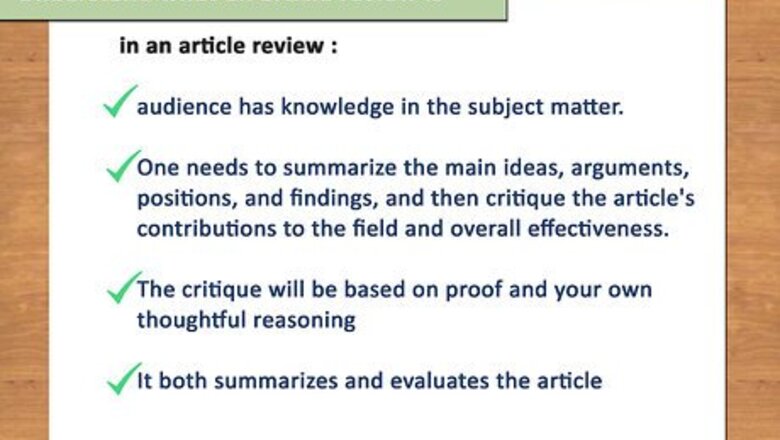
views
Education specialist Alexander Peterman recommends: "In the case of a review, your objective should be to reflect on the effectiveness of what has already been written, rather than writing to inform your audience about a subject."
- Read the article very closely, and then take time to reflect on your evaluation. Consider whether the article effectively achieves what it set out to.
- Write out a full article review by completing your intro, summary, evaluation, and conclusion. Don't forget to add a title, too!
- Proofread your review for mistakes (like grammar and usage), while also cutting down on needless information.[1]
Preparing to Write Your Review
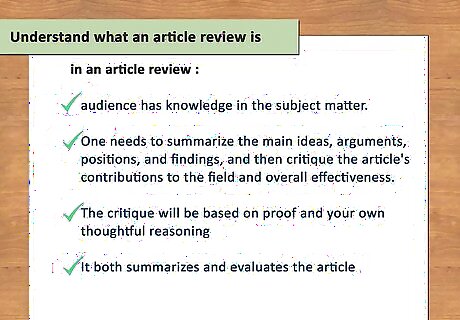
Understand what an article review is. An article review is written for an audience who is knowledgeable in the subject instead of a general audience. When writing an article review, you will summarize the main ideas, arguments, positions, and findings, and then critique the article's contributions to the field and overall effectiveness. Article reviews present more than just an opinion. You will engage with the text to create a response to the scholarly writer's ideas. You will respond to and use ideas, theories, and research from your studies. Your critique of the article will be based on proof and your own thoughtful reasoning. An article review only responds to the author's research. It typically does not provide any new research. However, if you are correcting misleading or otherwise incorrect points, some new data may be presented. An article review both summarizes and evaluates the article.
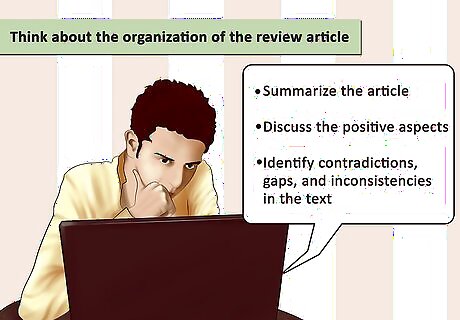
Think about the organization of the review article. Before you even begin reading the article you will review, you need to understand how your article review will be set up. This will help you understand how to read the article so that you can write an effective review. Your review will be set up in the following parts: Summarize the article. Focus on the important points, claims, and information. Discuss the positive aspects of the article. Think about what the author does well, good points she makes, and insightful observations. Identify contradictions, gaps, and inconsistencies in the text. Determine if there is enough data or research included to support the author's claims. Find any unanswered questions left in the article.
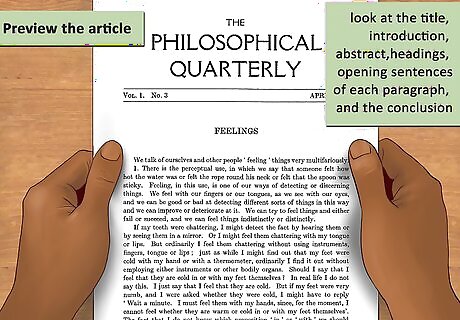
Preview the article. Begin by looking at the title, abstract, introduction, headings, opening sentences of each paragraph, and the conclusion. Then read the first few paragraphs, followed by the conclusion. These steps should help you start to identify the author's arguments and main points. Then read the article in its entirety. When you read the first time, just read for the big picture – that is, look for the overall argument and point the article is making. Make note of words or issues you don't understand and questions you have. Look up terms or concepts you are unfamiliar with, so you can fully understand the article. Read about concepts in-depth to make sure you understand their full context.
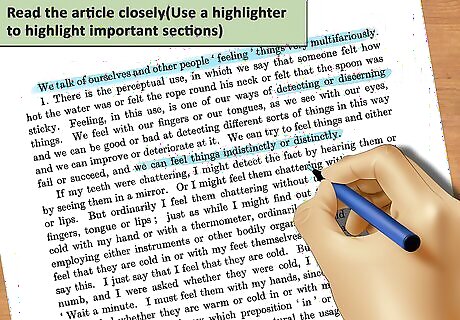
Read the article closely. Read the article a second and third time. Use a highlighter or pen to make notes or highlight important sections. Highlight the main points and the supporting facts. Don't: highlight every paragraph — just the central points.Do: supplement the most significant points with notes or cross-references. Connect what you read in the article to your existing knowledge of the topic. Think about things you have discussed in class or other articles you have read. Does the article agree or disagree with your previous knowledge? Does it build on other knowledge from the field? Determine how the article you are reviewing is similar and different from other texts you've read on the subject. Pay careful attention to the meaning of the article. Make sure you fully understand the article. The only way to write a good article review is to understand the article.
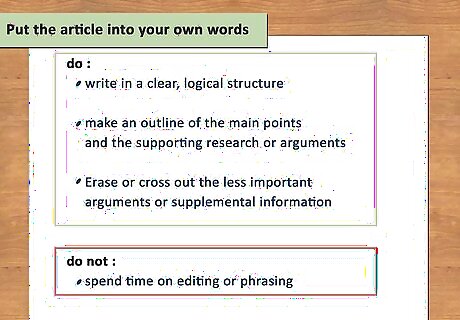
Put the article into your words. You can do this as a free written paragraph or as an outline. Start by putting the article in your own words. Focus on the argument, research, and claims the article makes. What is the main point driving at? Don't: spend time on editing or phrasing. This is just for your benefit.Do: write in a clear, logical structure to test your understanding. With either method, make an outline of the main points made in the article and the supporting research or arguments. It is strictly a restatement of the main points of the article and does not include your opinions. After putting the article in your own words, decide which parts of the article you want to discuss in your review. You can focus on the theoretical approach, the content, the presentation or interpretation of evidence, or the style. You will always discuss the main issues of the article, but you can sometimes also focus on certain aspects. This comes in handy if you want to focus the review towards the content of a course. Review the summary outline to eliminate unnecessary items. Erase or cross out the less important arguments or supplemental information. Your revised summary can serve as the basis for the summary you provide at the beginning of your review.
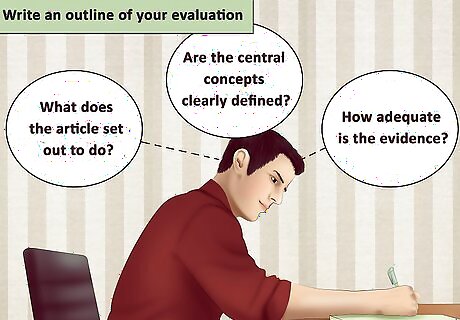
Write an outline of your evaluation. Review each item in the article summary to determine whether the author was accurate and clear. Write down all instances of effective writing, new contributions to the field, as well as areas of the article that need improvement. Create a list of strengths and weaknesses. The strength of the article may be that it presents a clear summation of a particular issue. Its weakness may be that it does not offer any new information or solutions. Use specific examples and references. For example, the article might have incorrectly reported the facts of a popular study. Jot down this observation in your outline and look up the facts of the study to confirm your observation. Think about the following questions to help you critique and engage with the article: What does the article set out to do? What is the theoretical framework or assumptions? Are the central concepts clearly defined? How adequate is the evidence? How does the article fit into the literature and field? Does it advance the knowledge of the subject? How clear is the author's writing? Don't: include superficial opinions or your personal reaction.Do: pay attention to your biases, so you can overcome them.
Writing the Article Review
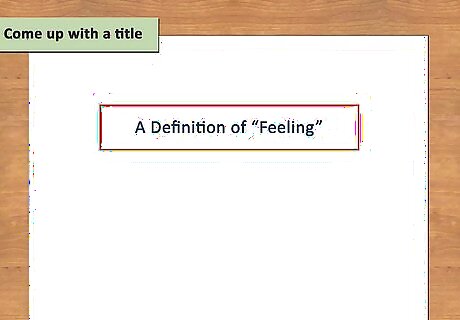
Come up with a title. This title should reflect the focus of your review. Decide between a declarative title, descriptive title, or interrogative title.
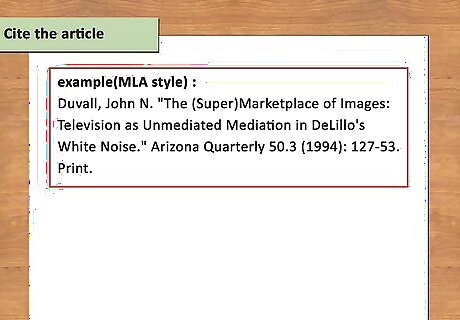
Cite the article. Under the title, place a complete citation of the article in the proper style. Go to the next line to begin your essay. Don't skip a line between the citation and first sentence. For example, in MLA, a citation may look like: Duvall, John N. "The (Super)Marketplace of Images: Television as Unmediated Mediation in DeLillo's White Noise." Arizona Quarterly 50.3 (1994): 127-53. Print.
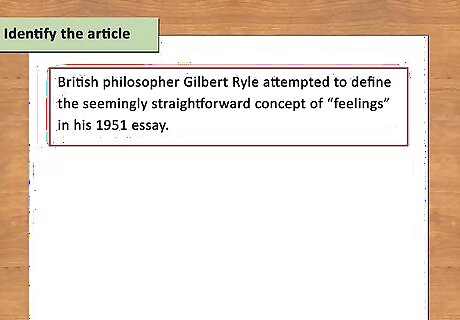
Identify the article. Start your review by referring to the title and author of the article, the title of the journal, and the year of publication in the first paragraph. For example: The article, "Condom use will increase the spread of AIDS," was written by Anthony Zimmerman, a Catholic priest.
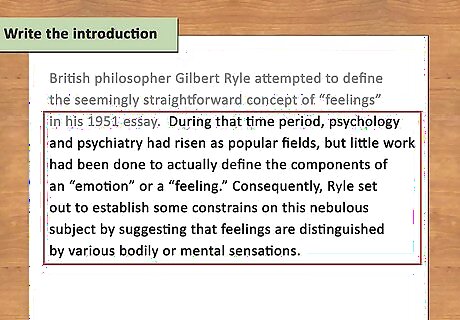
Write the introduction. The introduction of the article review will have the identification sentence. It will also mention the central themes of the article and the arguments and claims of the author. You also need to state the author's thesis. Sometimes, the thesis has multiple points. The thesis may not be clearly stated in the article, so you may have to determine the thesis yourself. Don't: make statements in the first person ("I").Do: give an overall impression of the article using the third person and a formal, academic style. Your introduction should only be 10-25% of your review. End the introduction with your thesis. Your thesis should address the above issues. For example: Although the author has some good points, his article is biased and contains some misinterpretation of data from others’ analysis of the effectiveness of the condom.
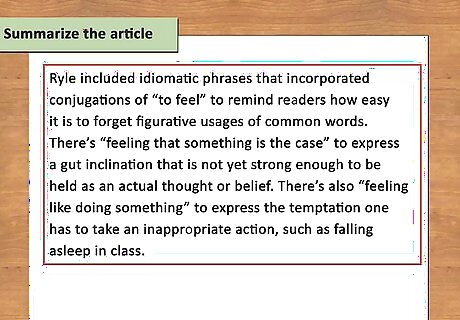
Summarize the article. Express the main points, arguments, and findings of the article in your own words, referring to your summary for assistance. Show how the article supports its claims. Make sure to include the article's conclusions. This may be done in several paragraphs, although the length will depend on requirements established by your instructor or publisher. Don't: cover specific examples, statistics, or background information familiar to experts in the field.Do: capture the main points of each section, as space allows. Use direct quotes from the author sparingly. Review the summary you have written. Read over your summary many times to ensure that your words are an accurate description of the author's article.
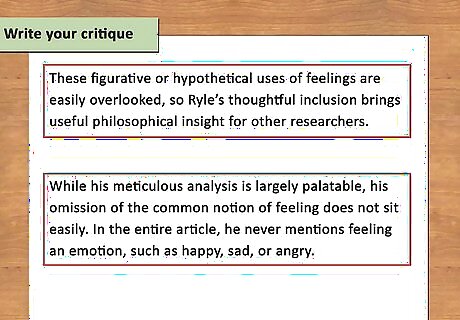
Write your critique. Use your outline of opinions to write many paragraphs explaining how well the author addressed the topic. Express your opinion about whether the article was a clear, thorough, and useful explanation of the subject. This is the core of your article review. Evaluate the article's contribution to the field and the importance to the field. Evaluate the main points and arguments in the article. Decide if the author's points help her argument. Identify any biases. Decide if you agree with the writer, then provide sufficient support as to why or why not. End by suggesting which audiences would benefit from reading the article. Don't: fill your review with a long list of unrelated critiques.Do: tie your grievances and praise together into a coherent argument, forming your own thesis. Support your critique with evidence from the article or other texts. The summary portion is very important for your critique. You must make the author's argument clear in the summary section for your evaluation to make sense. Remember, this is not where you say if you liked the article or not. You are assessing the significance and relevance of the article. Use a topic sentence and supportive arguments for each opinion. For example, you might address a particular strength in the first sentence of the opinion section, followed by several sentences elaborating on the significance of the point.
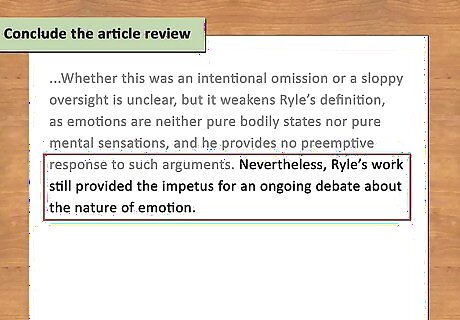
Conclude the article review. In a paragraph, summarize the main points of the article, as well as your opinions about its significance, accuracy, and clarity. If relevant, also comment on implications for further research or discussion in the field. This should only be about 10% of your overall essay. For example: This critical review has evaluated the article "Condom use will increase the spread of AIDS" by Anthony Zimmerman. The arguments in the article show the presence of bias, prejudice, argumentative writing without supporting details, and misinformation. These points weaken the author’s arguments and reduce his credibility.
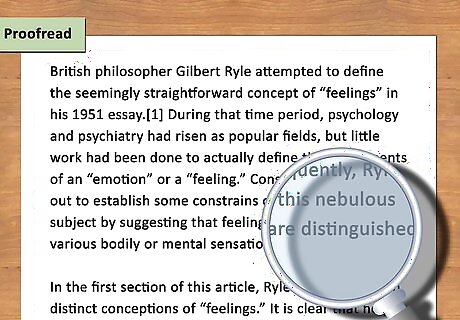
Proofread. Reread the review. Look for grammar, mechanics, and usage mistakes. Make sure to cut any extra, unneeded information. Make sure you have identified and discussed the 3-4 key issues in the article.




















Comments
0 comment